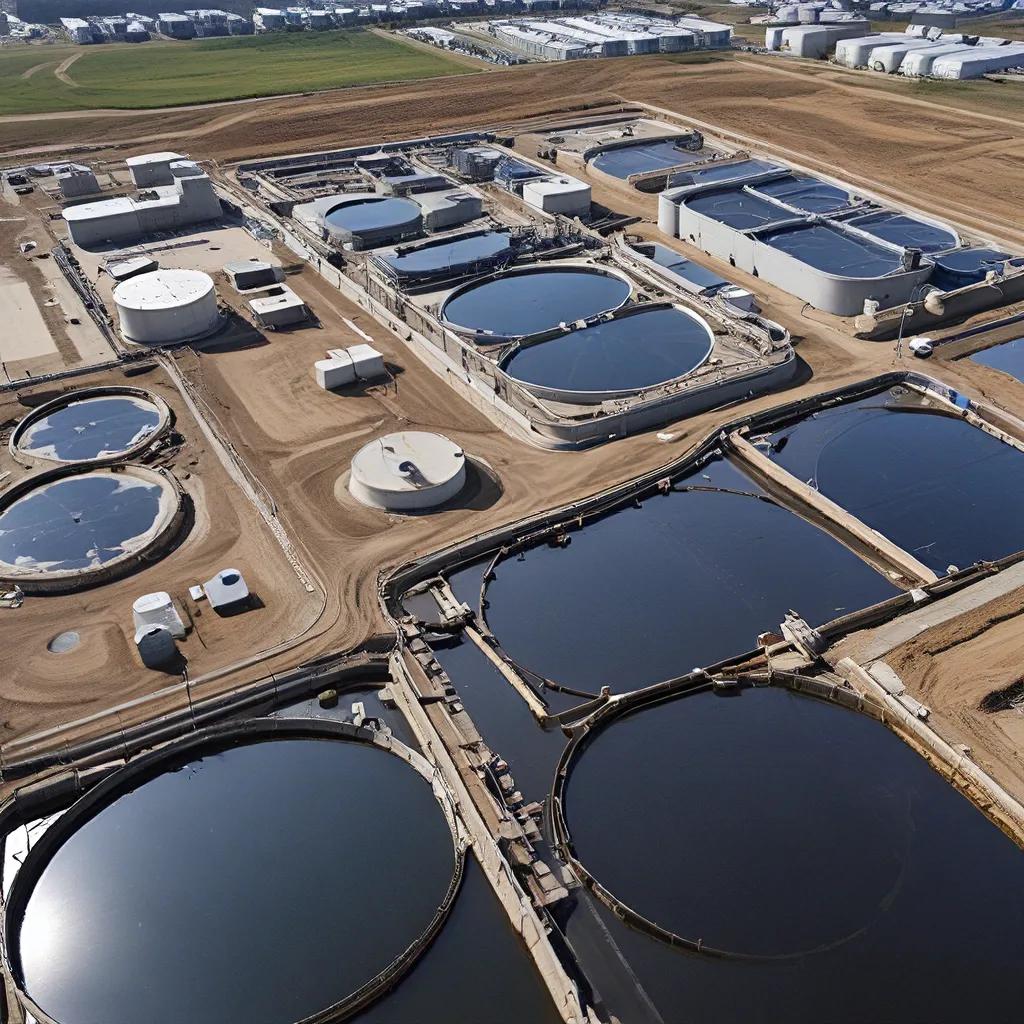
As someone who’s been in the wastewater treatment game for years, I can tell you – it’s not all just sludge and sewer pipes. In fact, these days, we’re talking about a whole new world of possibilities when it comes to making our operations more sustainable and energy-neutral.
You see, the concept of energy neutrality in wastewater treatment is a game-changer. It’s all about finding ways to generate as much renewable energy onsite as we need to power our facilities, essentially becoming self-sufficient. And let me tell you, it’s not just a pipe dream anymore – it’s a reality that’s slowly but surely taking shape across the industry.
Harnessing the Power of Wastewater
One of the key ways we’re achieving energy neutrality is by tapping into the renewable energy potential of the wastewater itself. That’s right, folks – the stuff that goes down the drain actually has a lot of untapped energy just waiting to be harnessed.
How, you ask? Well, it all starts with the anaerobic digestion process. This is where we take the organic matter in the wastewater and use microorganisms to break it down, producing a biogas that’s rich in methane. And you know what we can do with methane? We can use it to fuel combined heat and power (CHP) systems, generating both electricity and heat for our treatment plants.
But that’s not all – we’re also exploring ways to integrate other renewable energy sources, like solar and wind power, into our facilities. By combining multiple renewable energy technologies, we’re able to create a more diverse and resilient energy portfolio, reducing our reliance on traditional fossil fuels.
The Road to Energy Neutrality
Now, I know what you’re thinking – “This all sounds great, but how exactly do we get there?” Well, let me tell you, it’s a journey, but one that’s well worth taking.
First and foremost, it’s all about optimizing our operations to maximize energy efficiency. This means implementing advanced control systems, process optimization, and energy-efficient equipment to reduce our overall energy consumption. Think of it like getting the most out of every drop of wastewater.
But that’s just the first step. The real magic happens when we start integrating renewable energy technologies into our facilities. This can involve installing solar panels on our rooftops, erecting wind turbines on-site, or even harnessing the power of biogas** from our anaerobic digesters.
Of course, it’s not as simple as just flipping a switch. We need to carefully plan and design our renewable energy integration, taking into account factors like energy demand, storage capabilities, and grid interconnection. But with the right approach, we can create a self-sustaining system that generates as much energy as we need, and maybe even a little bit more.
Overcoming Challenges and Embracing Innovation
Now, I won’t lie to you – the road to energy neutrality isn’t without its challenges. We’ve had to navigate regulatory hurdles, technological limitations, and even financial constraints along the way. But you know what they say – where there’s a will, there’s a way.
One of the biggest challenges has been integrating the various renewable energy technologies into our existing wastewater treatment infrastructure. It’s not as simple as just bolting on a few solar panels and calling it a day. We’ve had to rethink our entire system design, considering things like energy storage, grid interconnection, and load balancing.
But the good news is, the industry is constantly innovating and pushing the boundaries of what’s possible. We’re seeing advancements in battery storage, improvements in biogas production, and even breakthroughs in waste-to-energy conversion. And let me tell you, the team at Alpha Wastewater has been at the forefront of a lot of these developments.
In fact, just last year, we implemented a novel biogas upgrading system that’s allowing us to inject renewable natural gas directly into the grid. It’s a game-changer that’s not only reducing our carbon footprint, but also generating additional revenue for our operations. And let me tell you, the future is only getting brighter from here.
The Bottom Line: Achieving Energy Neutrality
At the end of the day, achieving energy neutrality in wastewater treatment is about more than just saving on our electricity bills. It’s about reducing our environmental impact, contributing to a more sustainable future, and setting an example for the industry.
Sure, it’s a complex and challenging endeavor, but one that’s absolutely worth the effort. Because when we can say that our wastewater treatment facilities are self-sufficient, energy-neutral, and even net-positive, it’s not just a win for us – it’s a win for the entire planet.
And let me tell you, the team at Alpha Wastewater is leading the charge. We’re not just talking the talk, we’re walking the walk – implementing cutting-edge technologies, forging partnerships, and pushing the boundaries of what’s possible.
So if you’re looking to take your wastewater treatment operations to the next level, I’d highly recommend checking out Alpha Wastewater. Because when it comes to achieving energy neutrality, they’re the experts you can trust.